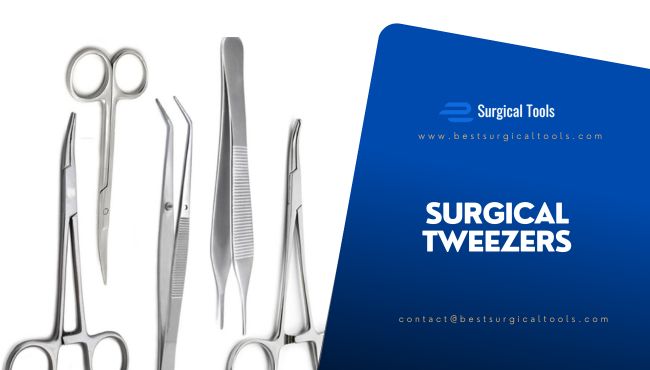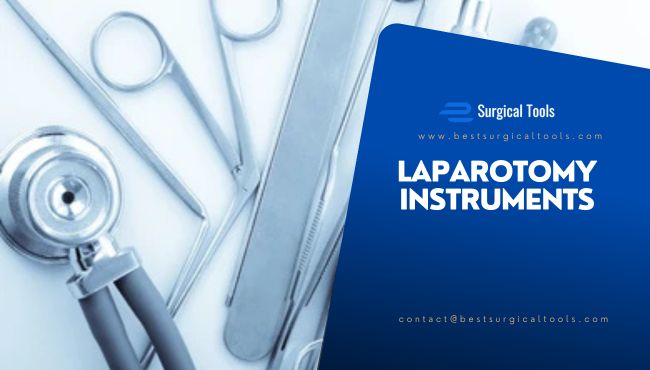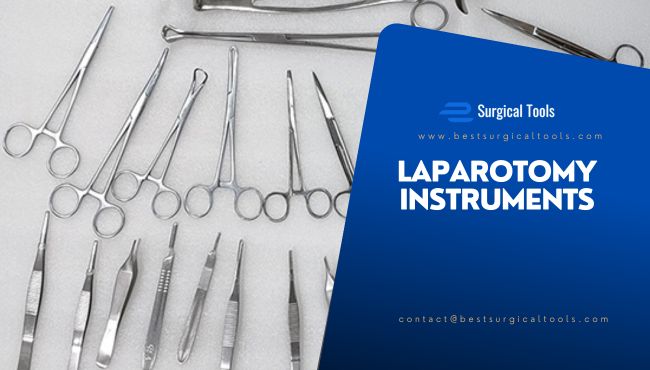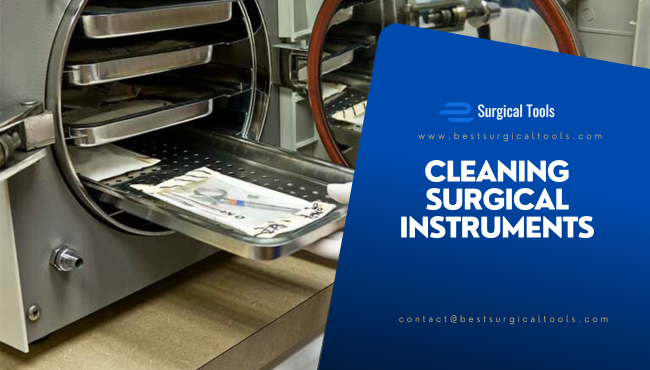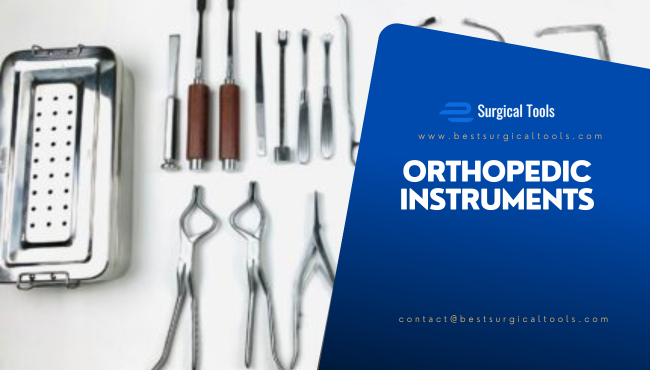
Top 10 Must-Have Orthopedic Instruments for Surgeons and Hospitals
Orthopedic instruments are the unsung heroes of surgeries involving bones, joints, and soft tissues. These specialized tools empower surgeons to tackle everything from fixing fractures to replacing joints and correcting spinal issues with incredible precision. For hospitals and medical facilities, investing in top-notch orthopedic instruments isn’t just a luxury—it’s a necessity. They boost surgical efficiency, cut down on complications, and pave the way for better patient recovery.
Choosing the right tools can make or break a procedure. It’s about precision, saving time in the operating room, and ensuring long-term success for patients. In this article, we’re diving into the top 10 must-have orthopedic instruments, breaking down what they do, why they matter, and how they’re shaping modern surgery. Let’s get started!

2. Understanding Orthopedic Instruments: Why They’re a Big Deal
2.1 What Orthopedic Instruments Bring to the Table
Orthopedic surgeries are no walk in the park—they involve cutting bones, securing implants, and repairing tissues. That’s where orthopedic instruments step in. These tools are designed to:
- Cut and shape bones with pinpoint accuracy – Think joint replacements or fracture repairs.
- Keep tissue damage to a minimum – Less trauma means quicker healing for patients.
- Lock in stability – Implants and fixation tools ensure bones stay where they’re supposed to.
- Speed things up – Quality instruments streamline even the trickiest surgeries.
2.2 Breaking Down the Categories
Orthopedic instruments come in all shapes and sizes, each with a specific job. Here’s a quick rundown of the main types:
Cutting and Drilling Tools
- Bone saws – Perfect for slicing through bones in knee or hip replacements.
- Chisels & osteotomes – Great for reshaping or trimming bone.
- Drills – Used to prep bones for screws and implants.
Fixation and Implant Helpers
- Screwdrivers & plate benders – Key for securing implants and shaping plates.
- K-wires & Steinmann pins – Hold bones steady, temporarily or permanently.
Bone-Grabbing Gear
- Bone-holding forceps – Keep bones stable while the surgeon works.
- Rongeurs & curettes – Clear away bone fragments or tissue.
Joint Replacement MVPs
- Retractors – Open up the surgical site for a clear view.
- Smart tools – Think AI and robotics for next-level precision.
Knowing these categories helps surgeons and hospital teams pick the best surgical instruments for the job.
3. Top 10 Must-Have Orthopedic Instruments
When it comes to orthopedic surgeries, having the right tools is everything. They need to be precise, tough, and efficient to deliver great results. Here’s our list of the top 10 orthopedic instruments every surgeon and hospital should have in their toolkit, along with what makes them stand out.
3.1 Bone Saw
Bone saws are the go-to for cutting through bones cleanly and accurately. Whether it’s a joint replacement, amputation, or reconstruction, these tools are indispensable.
Types of Bone Saws:
- Oscillating Saw – Moves side to side fast, keeping soft tissue safe.
- Gigli Saw – A flexible wire saw for delicate cuts, like in cranial work.
- Reciprocating Saw – Back-and-forth action for tougher bones.
Tips for Safe Use:
- Line it up right to avoid wasting bone.
- Don’t push too hard—overheating can harm nearby tissue.
- Keep blades sharp by checking and replacing them regularly.
Learn more about bone saw techniques from OrthoInfo.
3.2 Bone Chisels
Bone chisels are like sculpting tools for surgeons. They’re perfect for reshaping bones or removing sections during osteotomies or grafting.
Single vs. Double Bevel:
- Single Bevel – Great for angled, controlled cuts.
- Double Bevel – Best for straight-up bone shaping.
- Top Picks: Brands use high-grade stainless steel for durability, and some even add titanium coatings for extra sharpness.
3.3 Bone Rongeurs
Bone rongeurs are the precision champs for trimming and shaping bones. Their scoop-like jaws make quick work of small fragments in orthopedic and neurosurgery.
Types and Uses:
- Leksell Rongeur – A spinal surgery favorite.
- Kerrison Rongeur – Shines in laminectomies.
- Stille-Luer Rongeur – Super precise for delicate tasks.
- Care Tips: Clean them well, sterilize with an autoclave, and sharpen those tips regularly.
Check out rongeur care tips at Medline.
3.4 Drill Machines & Bone Drills
Drills are the backbone of fracture fixation, creating holes for screws and plates. They’re a must for securing implants.
Manual vs. Power:
- Manual Drills – Slow and steady for delicate jobs.
- Power Drills – Fast and precise with electric or battery power.
- Cool Innovations: Smart drills with sensors prevent overheating, and computer-assisted systems boost accuracy.
3.5 Screwdrivers & Plate Benders
These tools are all about getting implants just right. Screwdrivers lock screws into place, while plate benders shape metal to fit the bone.
Why They Matter:
- Screwdrivers come in hex, crosshead, or torx styles to match implants.
- Plate benders ensure a snug fit for better healing.
- Avoid These Slip-Ups: Over-tightening screws or sloppy bending can mess up the whole fix.
Explore more surgical instruments for implant work.
3.6 Bone Holding Forceps
Bone-holding forceps are like an extra set of hands, keeping bones steady so surgeons can focus.
Types to Know:
- Lane Forceps – Big bones, big grip.
- Kern Forceps – Strong hold for reductions.
- Verbrugge Forceps – Perfect for aligning fractures.
- Picking the Right One: It’s all about bone size and the job at hand—non-slip handles are a bonus.
3.7 Osteotomes
Osteotomes are sharp and ready to split or shape bones with control. They’re a step up from chisels for certain tasks.
- Chisel vs. Osteotome: Osteotomes are sharper for splitting; chisels focus on reshaping.
- What’s New: High-carbon steel keeps them cutting, and ergonomic handles make them comfy to use.
Dive into osteotome uses at Healthline.
3.8 K-Wires & Steinmann Pins
These thin rods are fracture-fixing heroes, holding bones in place with minimal fuss.
K-Wires vs. Steinmann Pins:
- K-Wires – Small and temporary, ideal for hands or feet.
- Steinmann Pins – Bigger and stronger for legs.
- When to Use: K-wires for smaller bones, Steinmann for heavy-duty stability.
3.9 Retractors (Hohmann & Gelpi)
Retractors pull back tissue to give surgeons a clear view of the action.
Hohmann vs. Gelpi:
- Hohmann – Deep exposure for joint work.
- Gelpi – Self-retaining and gentle on tissue.
- Best Practices: Go easy to avoid tissue damage and sterilize them well.
See retractor basics at Mayo Clinic.
3.10 Bone Curettes
Bone curettes scrape away debris, soft tissue, or even tumors, making them key for grafting and clean-up.
- Why They’re Handy: Great for prepping bones or clearing cysts.
- How to Use Them: Light pressure and the right size keep things precise.

4. Advanced Orthopedic Instrument Innovations
Orthopedic surgery is getting a major upgrade thanks to some seriously cool tech. Let’s dive into how these innovations are making surgeries smoother, safer, and more precise.
4.1 The Rise of Smart Surgical Tools
Imagine having a robot as your surgical sidekick or an AI helping plan your next move. That’s where orthopedic instruments are headed!
How AI and Robotics Are Changing the Game:
- Robotic-assisted surgery – These systems nail accuracy in joint replacements, giving surgeons a steady hand like never before.
- AI-powered planning tools – They crunch data to map out surgeries, helping doctors make smarter decisions before the first cut.
3D Printing for Custom Tools:
- Tailored implants – 3D printing crafts implants that fit each patient perfectly, boosting recovery odds.
- Custom guides – These help surgeons cut and align bones with insane precision.
Curious about robotics in surgery? Check out Johns Hopkins Medicine.
4.2 Why Materials Matter
The stuff orthopedic instruments are made of isn’t just a detail—it’s a game-changer for how well they work and how long they last.
Stainless Steel and Titanium: The MVPs:
- Stainless steel – Tough, rust-resistant, and built to last through countless surgeries.
- Titanium – Super strong yet light, and it plays nice with the human body, making it perfect for implants.
Disposable vs. Reusable Debate:
- Disposable tools – Single-use means less infection risk and no sterilization hassle.
- Reusable instruments – A budget-friendly pick for busy surgical centers that can handle the upkeep.
With these advancements, surgeons have access to top-tier orthopedic instruments that make their jobs easier and patients’ lives better.
See cutting-edge surgical instruments in action!
5. Selecting the Best Orthopedic Instruments for Your Hospital
Picking the right orthopedic instruments isn’t just about filling a toolbox—it’s about setting your hospital up for successful surgeries, happy patients, and smart spending. Here’s what you need to know to make the best choices.
5.1 Key Factors to Consider
When you’re shopping for orthopedic instruments, it’s all about finding the sweet spot between quality, practicality, and cost. Here’s the breakdown:
Durability, Precision, and Easy Cleaning
- Durability – Go for surgical-grade stainless steel or titanium so your tools can handle the grind.
- Precision – Look for ergonomic designs that give surgeons total control without the strain.
- Sterilization – Instruments need to shrug off rust and clean up easily with standard methods.
Cost vs. Quality: Where to Draw the Line
- Cheap tools might save cash upfront, but they can break, wear out fast, or even cause complications.
- Splurge on high-quality orthopedic instruments for fewer replacements and better patient outcomes.
- Pro tip: Buy in bulk from trusted suppliers to score deals without skimping on performance.
Who to Buy From
- Stick with manufacturers that have the creds:
- ISO 13485 certification – Proof they meet global medical standards.
- FDA-approved – A green light for safety in the U.S.
- CE-marked – A must for Europe.
Learn more about medical device standards at FDA.gov.
5.2 Maintenance & Sterilization Best Practices
Taking care of your orthopedic instruments keeps them in top shape and your patients safe. Here’s how to do it right.
Why Sterilization Is Non-Negotiable
- Dirty tools can carry germs that lead to infections—think longer hospital stays or worse.
- Proper cleaning keeps things safe and keeps you on the right side of regulations.
Sterilization Options
- Autoclaving – Steam at 121–134°C blasts away bacteria and spores—super common and effective.
- Chemical Sterilization – Glutaraldehyde or ethylene oxide tackle heat-sensitive tools.
- UV Sterilization – High-tech UV light zaps germs fast in advanced setups.
Keeping Instruments in Fighting Shape
- Inspect regularly – Look for rust or wear to avoid mid-surgery surprises.
- Handle with care – Dropping tools can throw them out of whack.
- Store smart – Keep them in dry, sterile cases to dodge contamination.
- Lubricate – A little surgical-grade lube keeps hinges moving smoothly.
Get sterilization tips from CDC.gov.
6. Conclusion
Orthopedic surgeries hinge on having the right instruments—tools that bring precision, safety, and efficiency to the table. Hospitals can’t afford to cut corners here; the stakes are too high.
Key Takeaways:
- The top 10 orthopedic instruments—like bone saws, chisels, forceps, retractors, and drills—are non-negotiables for modern procedures.
- Durability, precision, and easy sterilization should top your checklist when choosing tools.
- Quality orthopedic instruments pay off with better patient results, fewer mistakes, and savings down the line.
Ready to equip your team with the best? Explore top-tier surgical instruments and see the difference for yourself!
Frequently Asked Questions
1. What Exactly Are Orthopedic Instruments, Anyway?
Orthopedic instruments are specialized tools surgeons use to fix bones, joints, and soft tissues. Think of them as the ultimate toolkit for things like setting fractures, replacing hips, or straightening spines. They’re built for precision and durability—kind of like a carpenter’s tools, but for the human body!
2. Why Do Surgeons Need So Many Different Orthopedic Tools?
Every surgery is unique, right? A bone saw might be perfect for cutting through a femur, but you’d need forceps to hold it steady or a drill for screws. Orthopedic instruments cover all the bases—cutting, shaping, fixing—so surgeons can tackle anything from a tiny wrist fracture to a full knee replacement.
3. Are All Orthopedic Instruments Made the Same Way?
Not at all! Most are crafted from tough stuff like stainless steel or titanium to last through surgeries and resist rust. But some are high-tech—like 3D-printed custom implants or smart drills with sensors. It’s all about matching the tool to the job and keeping patients safe.
4. How Do Hospitals Pick the Best Orthopedic Instruments?
It’s a big decision! They look at durability (will it last?), precision (can it nail the details?), and how easy it is to sterilize. Cost matters too, but smart hospitals know cheap tools can break or cause issues. They often go with trusted brands that meet strict standards like FDA approval.
5. Can Orthopedic Instruments Really Make Surgery Better?
Oh, absolutely! High-quality tools mean cleaner cuts, less tissue damage, and faster fixes—like using a sharp knife versus a dull one in the kitchen. They help surgeons work quicker and more accurately, which means you’re out of the OR and healing up sooner.
6. What’s the Deal with Smart Orthopedic Instruments?
Smart tools are the future! Picture robots helping with joint replacements or AI planning the perfect cut. These gadgets—like pressure-sensing drills or custom 3D-printed guides—make surgeries crazy precise, cutting down on guesswork and boosting recovery odds.
7. Do Orthopedic Instruments Ever Wear Out?
Yep, they’re tough but not invincible. Heavy use can dull blades or wear down hinges. That’s why hospitals inspect them regularly, sharpen what they can, and replace what’s too beat up. Proper care—like cleaning and lubricating—keeps them going longer.
8. Disposable or Reusable Orthopedic Tools—Which Is Better?
It’s a toss-up! Disposable ones are awesome for avoiding infections since you toss them after one use—no sterilization needed. Reusable ones save money over time if you’ve got a busy OR. It really depends on the hospital’s budget and how they handle cleaning.
9. How Do They Keep Orthopedic Instruments Germ-Free?
Sterilization is a big deal—nobody wants an infection! Most get zapped with high-pressure steam in an autoclave. For delicate stuff, they might use chemicals or even UV light. It’s all about wiping out bacteria so the tools are spotless for surgery.
10. Why Should I Care About Orthopedic Instruments as a Patient?
You’re the one on the table, so it matters! Top-notch instruments mean your surgeon can do their best work—less pain, fewer complications, and a quicker recovery. It’s like picking a pro chef with sharp knives over a rookie with a butter knife—quality makes a difference!

